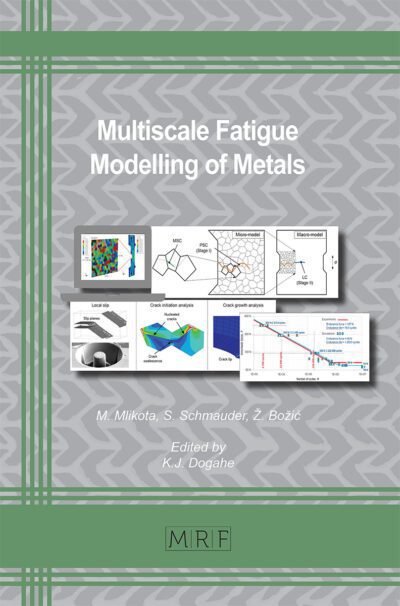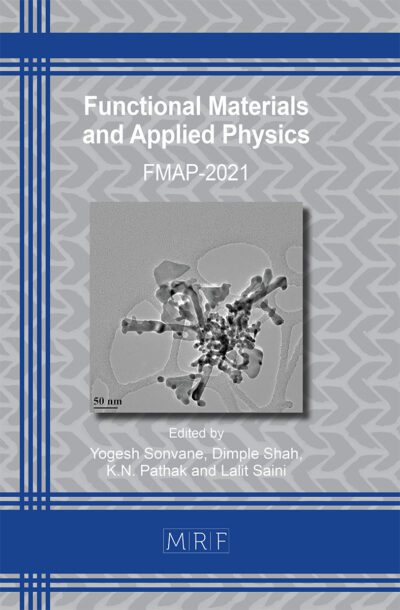Evaluation of data transfer methods efficiency in the random cellular automata model of dynamic recrystallisation
PAWLIKOWSKI Kacper, SITKO Mateusz, CZARNECKI Michał, MADEJ Łukasz
download PDFAbstract. Numerical simulations can help predict microstructure morphology evolution under hot forming conditions and support final material properties determination. Cellular Automata (CA) is a commonly used full-field method to model changes in microstructure morphology during different metal-forming processes. However, in the case of microstructure evolution changes during high deformation levels, at higher temperatures, the CA method has some limitations related to computational domain geometry changes. The use of random cellular automata (RCA) allows for a more realistic representation of this phenomenon. However, it involves much more effort during model implementation to optimise the algorithm in terms of execution time, which has to be at an acceptable time. This paper is a part of a larger research aiming at developing the dynamic recrystallisation model (DRX) using the RCA directly incorporated into the finite element (FE) framework. The main goal of the current work is to evaluate the efficiency of data transfer approaches between the two mentioned coupled model components. Particular attention is on shortening the execution time thanks to data streams opened in binary mode.
Keywords
Random Cellular Automata, Dynamic Recrystallisation, Microstructure
Published online 4/19/2023, 6 pages
Copyright © 2023 by the author(s)
Published under license by Materials Research Forum LLC., Millersville PA, USA
Citation: PAWLIKOWSKI Kacper, SITKO Mateusz, CZARNECKI Michał, MADEJ Łukasz, Evaluation of data transfer methods efficiency in the random cellular automata model of dynamic recrystallisation, Materials Research Proceedings, Vol. 28, pp 1559-1564, 2023
DOI: https://doi.org/10.21741/9781644902479-168
The article was published as article 168 of the book Material Forming
![]() Content from this work may be used under the terms of the Creative Commons Attribution 3.0 license. Any further distribution of this work must maintain attribution to the author(s) and the title of the work, journal citation and DOI.
Content from this work may be used under the terms of the Creative Commons Attribution 3.0 license. Any further distribution of this work must maintain attribution to the author(s) and the title of the work, journal citation and DOI.
References
[1] K. Huang, R.E. Logé, A Review of Dynamic Recrystallization Phenomena in Metallic Materials, Mater. Des. 111 (2016) 548-574. https://doi.org/10.1016/j.matdes.2016.09.012
[2] M. Bernacki, R.E. Logé, T. Coupez, Level Set Framework for the Finite-Element Modelling of Recrystallization and Grain Growth in Polycrystalline Materials, Scripta Mater. 64 (2011) 525-528. https://doi.org/10.1016/j.scriptamat.2010.11.032
[3] T. Takaki, A. Yamanaka, Y. Tomita, Phase-Field Modeling for Dynamic Recrystallization, Adv. Struct. Mater. 64 (2015) 441-459. https://doi.org/10.1007/978-3-319-19440-0_20
[4] R.L. Goetz, V. Seetharaman, Modeling Dynamic Recrystallization Using Cellular Automata, Scripta Mater. 38 (1998) 405- 413. https://doi.org/10.1016/S1359-6462(97)00500-9
[5] N. Xiao, C. Zheng, D. Li, Y. Li, A Simulation of Dynamic Recrystallization by Coupling a Cellular Automaton Method with a Topology Deformation Technique, Comput. Mater. Sci. 41 (2008) 366-374. https://doi.org/10.1016/j.commatsci.2007.04.021
[6] J. Gawąd, M. Pietrzyk, Application of Cafe Multiscale Model to Description of Microstructure Development during Dynamic Recrystallization, 2007.
[7] Ł. Madej, M. Sitko, K. Radwanski, R. Kuziak, Validation and Predictions of Coupled Finite Element and Cellular Model: Influence of the Degree of Deformation on Static Kinetics Case Study, Mater. Chem. Phys. 179 (2016) 282-294. https://doi.org/10.1016/j.matchemphys.2016.05.040
[8] H. Hallberg, M. Wallin, M. Ristinmaa, Simulation of Discontinuous Dynamic Recrystallization in Pure Cu Using a Probabilistic Cellular Automaton, Comput. Mater. Sci. 49 (2010) 25-34. https://doi.org/10.1016/j.commatsci.2010.04.012
[9] N. Yazdipour, C.H.J. Davies, P.D. Hodgson, Microstructural Modeling of Dynamic Recrystallization Using Irregular Cellular Automata, Comput. Mater. Sci. 44 (2008) 566-576. https://doi.org/10.1016/j.commatsci.2008.04.027
[10] H. Li, X. Sun, H. Yang, A Three-Dimensional Cellular Automata-Crystal Plasticity Finite Element Model for Predicting the Multiscale Interaction among Heterogeneous Deformation, DRX Microstructural Evolution and Mechanical Responses in Titanium Alloys, Int. J. Plast. 87 (2016) 154-180. https://doi.org/10.1016/j.ijplas.2016.09.008
[11] L. Madej, M. Sitko, A. Legwand, K. Perzynski, K. Michalik, Development and Evaluation of Data Transfer Protocols in the Fully Coupled Random Cellular Automata Finite Element Model of Dynamic Recrystallization, J. Comput. Sci. 26 (2018) 66-77. https://doi.org/10.1016/j.jocs.2018.03.007

































